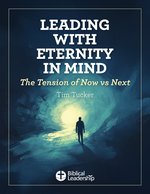The right-size hat for pastors
 iStock
iStock
A fruitful pastor must have a hat rack, one with lots of hooks. In the course of ministry, pastors become accustomed to wearing many hats, but no pastor can wear every hat equally well.
My wife and I vacationed in a resort town in the San Bernardino mountains two hours from our home. Strolling along the tiny main street, we noticed a store selling hats—nothing but hats. I soon started trying on hats of various colors and styles, laughing as I looked at myself in a mirror. Some were too small and sat on the top of my head like a toy. Others were scads too large, drooping over my ears. Once I found the right-size hat, it was easy to select ones that fit well. Though the store offered hundreds of hats, only some fit me well, and few looked good on me.
The different hats that pastors wear do not fit equally well on every pastor. A person's different callings, skills, and natural abilities make some hats fit better than others. Learning to change hats is a challenge. Determining which hat or hats you wear best is a pathway to enlarging your ministry and making it more effective.
Devoting a little of your time to everything means committing a great deal of yourself to nothing. Your time is a unique resource. Three human resources—time, money, and people—can limit or empower ministry. You can raise more money and find more people, but you can't multiply time. It's limited. So you must narrow your focus and determine which hats you wear best.
Start by taking a personal audit of your life and ministry using the following questions.
1. What did God create me to accomplish? What are my strengths? What am I good at doing?
Have you ever noticed thatschools (seminaries too) don't encourage you to focus on yourstrengths? Instead, they focus on your weaknesses. The homileticsprofessor says, "You should focus more on explaining the text,because you need help with explaining the text." Why don't we hear, "You should tell more stories. You're really good at storytelling"?
This focusing on weaknesses rather than strengths happens throughout our lives, to the point that it's become ingrained for most of us. But experts in leadership development point out how great teachers, leaders, managers, and, yes, pastors recognize strengths and focus on them instead.
2. Where do I see God's blessing in my life? Where have I seen results?
Be honest and ruthless. Allow me to share a personal example.I wanted to be a preacher, an evangelist, and a musician,but everyone said I was a good teacher. No one was surprised thatI ended up teaching in seminary. I also served as a youth pastor, butkids didn't come. In contrast, whenever I worked with adults, myministry thrived. It was like God was shouting, "Work with adults!"
To find what God is blessing in your own life, write down what you do, your key activities, and what you hope to see from your activity. Keep a list and then look at it in nine to twelve months.
What do you see? The results will show you what God blesses in your ministry. Ask your administrative assistant, if you have one, what you do and don't do well. Ask people around you. If they're honest and have observed you for a number of years, they can tell you.
3. What are the key tasks for my church, and are they covered? What needs to be done effectively if this church is to be fruitful?
Sit down with individual leaders from your church and discuss the key activities of your church. Ask them what needs to be done if your church is to be fruitful. Make lists of what each leader tells you. After you've spoken to everyone, look at the lists to see where they overlap. Then look at the few exceptions. Take these outliers seriously, as they may be blind spots that only one person sees. What hats must be worn to serve the needs and opportunities found in your church? What can you do that no one else can do?
Once you have perspectives on these three questions, glance at your hat rack and ask, "What hats should I keep wearing?" "What hats should I start wearing more often, or less often?" "What hats should I stop wearing?" "Which hats should I give to others?" As a pastor, you'll need to wear all the hats, sometimes even the hats that don't fit you so well. Working from your strengths is best, but working from weaknesses is regularly needed.
Excerpted from The 10 Key Roles of a Pastor: Proven Practices for Balancing the Demands of Leading Your Church, by Gary L. McIntosh (Baker Books, 2021).
| Gary L. McIntosh (PhD, DMin, Fuller Theological Seminary) is president of the Church Growth Network and professor of Christian ministry and leadership at Talbot School of Theology, Biola University. He is an internationally known speaker and church consultant who has written more than 25 books, including his most recent book, The Solo Pastor: Understanding and Overcoming the Challenges of Leading a Church Alone. He lives in California. Learn More » |
More on Vision & Culture
- Open borders or compassionate order? (by Bob Russell)
- They tried to quiet Charlie Kirk—but the gospel still speaks (by Bob Russell)
- What can Christian leaders learn from a 20-something YouTuber? Quite a lot… (by Zac McGowen)
- Steps to Launching Your Personal Workplace Ministry (by )


